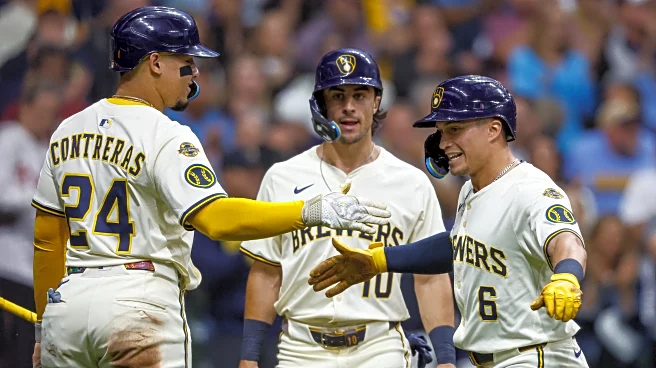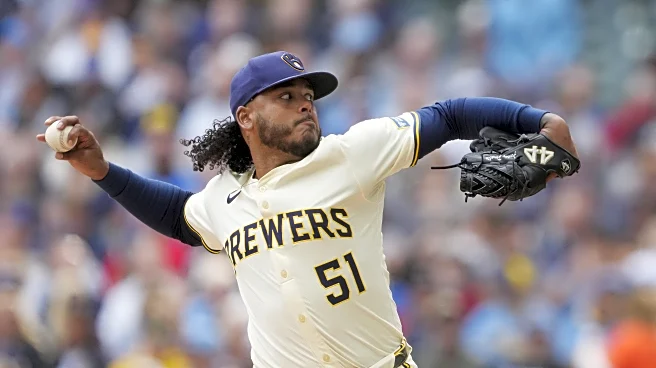What's Happening?
The debate over the relevance of batting average as a key metric in Major League Baseball has resurfaced, with analysts suggesting it may no longer be the best measure of a player's hitting proficiency. Historically, batting average has been a primary statistic for evaluating hitters, but its significance has been challenged by newer metrics that offer a more comprehensive view of a player's performance. The discussion gained traction after Trea Turner, with a .301 average, is poised to become the National League batting champion, potentially setting a record for the lowest batting average to achieve this title. This situation has reignited conversations about the effectiveness of batting average compared to other statistics like on-base percentage (OBP) and weighted on-base average (wOBA), which account for walks, hit-by-pitches, and the value of extra-base hits.
Why It's Important?
The shift away from batting average as the primary measure of hitting proficiency reflects broader changes in how baseball performance is analyzed. This evolution impacts player evaluations, contract negotiations, and team strategies, as metrics like OBP and wOBA provide a more nuanced understanding of a player's contribution to the game. As teams increasingly rely on data-driven approaches, players who excel in areas beyond traditional batting average may find greater opportunities and recognition. This change could also influence how fans perceive player achievements and the criteria for awards like the batting champion title.
What's Next?
If Major League Baseball decides to officially adopt new metrics for determining batting champions, it could lead to significant changes in how players are evaluated and rewarded. This shift might prompt teams to adjust their scouting and development strategies to prioritize players with high OBP and wOBA. Additionally, the league could see a transformation in fan engagement, as new statistics become more widely understood and appreciated. The ongoing debate may also encourage further innovation in baseball analytics, as teams and analysts seek even more accurate ways to measure player performance.
Beyond the Headlines
The potential de-emphasis on batting average could have cultural implications within baseball, challenging long-standing traditions and perceptions of what constitutes a successful hitter. This shift may also influence the way young players are trained, with a focus on developing skills that contribute to higher OBP and wOBA. As the sport continues to evolve, the integration of advanced metrics could lead to a more inclusive understanding of player value, recognizing diverse talents and contributions that were previously overlooked.














